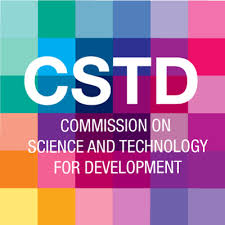Side event by the institute for transformative technologies: 50 breakthroughs technologies for the SDGs
13 May 2019 14:00h - 15:00h
Event report
[Read more session reports and live updates from the 22nd Session of the Commission on Science and Technology for Development]
The side event, organsed by the Institute for Transformation Technologies, addressed a case study on how interdisciplinary and multistakeholder partnerships have created a best practice example for bringing clean and affordable power in one of the poorest rural areas of India. Moderated by Ms Shamika N. Sirimanne (Director, Division on Technology and Logistics and Head, CSTD Secretariat, UNCTAD), the event was based on the study ‘The 50 most critical scientific and technological breakthroughs required for sustainable global development’ by Mr Shashi Buluswar (CEO, Institute for Transformative Technologie) and focused on the implementation of a mini-grid project aiming to represent the premise for a best practice in electrification processes. Buluswar explained that the study was published at almost the same time as the adoption of the Millennium Development Goals (MDGs), and it aimed to look at the new generations of technologies in different sectors, from health to education. Among the technologies and sectors analysed, access to electricity was the main topic of the event, at the core of the Utility-in-a-Box case study.
Despite the recent developments and achievements in spreading electricity infrastructures and inter-connectivity, many poor and rural Indian areas are left behind. To tackle this problem, a mini-grid project has been established in collaboration with ITT, Tata Power, India’s largest power generation company, the New York-based Rockefeller Foundation, and Smart Power India, a Rockefeller Foundation programme. As Buluswar explained, the traditional model of development through aid is not effective anymore. There are a lot of countries around the world, in which there are innovative business models put in place by local companies which might lack resources. In the specific case of providing electricity to rural areas, it is not practical and efficient to connect villages to the main grid due to the fact that they are too far from those infrastructures. Alternative solutions were found in the deployment of solar panels which, however, have two main negative externalities: First, the systems are not very robust; and second, they are quite expensive. In order to address this issue, the mini-grid project, Utility-in-a-Box, was implemented as a combination of hybrid solar, battery storage, and diesel-biomass, which is delivered as a pre-assembled box to a specific site within two days, with an installation time of less than one week and with an overall cost which is nearly 50% cheaper than the available market alternative.
By Stefania Pia Grottola
Related topics
Related event

22nd Session of the Commission on Science and Technology for Development
13 May 2019 16:30h - 17 May 2019 16:30h
Geneva, Switzerland
